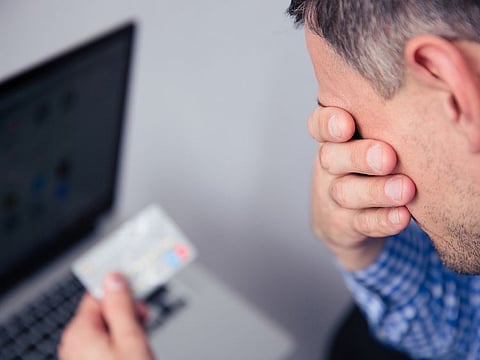How to prevent credit card data theft and protect your finances
Here’s how credit card fraud happens and tips to protect yourself

With the increasing dependency on plastic money, credit card frauds can prove to be extremely damaging for your finances.
Modern-age frauds can range from theft of cards, account takeover, counterfeiting, to email or telephone order and more. Here are some ways how you can protect yourself from credit card theft.
Protecting your physical credit card
Stealing your physical credit card is in some respects the easiest way for a scammer to get their hands on your money.
With the actual card in hand, a scammer has all the information they need to make fraudulent purchases: the credit card number, expiration date, and the security code on the back.
That means keeping your physical cards safe is one of the best ways to protect yourself from credit card theft. Don't carry more cards than you intend to use.
If you do find yourself missing a credit or debit card, make sure you call your bank immediately to report it lost or stolen.
The faster you move to lock down the card, the less likely the scammers will be able to make fraudulent charges. Make sure you're able to contact your bank quickly if your card is stolen or lost.
Recognising card skimmers
Credit card thieves also go high-tech to get your information. Credit card skimmers are small devices placed on a legitimate spot for a card scanner, such as on an ATM.
When you scan your card to pay, the skimmer device captures all the information stored in your card's magnetic stripe.
In some cases, when there's a skimmer placed on an ATM, there's also a tiny camera set up to record you entering your PIN so the fraudster has all the information they need to access your account.
Generally, these devices will often stick out past the panel rather than sit flush with it, as the legitimate credit card scanner is supposed to.
Other red flags to look for are scanners that seem to move slightly instead of being firmly affixed, or a pin pad appearing thicker than normal. All of these can possibly indicate a skimmer is in place.
Keeping your cards safe online
You should never provide your credit card information via a link in an email purporting to be from your financial institution or a merchant.
Scammers are able to make their fake emails and websites look legitimate, which is the reason why statistics indicate that online credit card fraud is what people have fallen victim to the most globally.
The first is the actual email address. These fake emails will often have a legitimate looking display name, which is the only thing you might see in your email.
However, if you hover over the display name, you can see the actual email address that sent you the message. Illegitimate addresses do not follow the same format you'll see from the legitimate company.
Any legitimate site that needs financial info will have a secure URL to accept your payment. Secure URLs start with ‘https://’ and feature a lock icon in the browser bar. Stay clear if these elements are missing.
Daily practices that keep you safe
In addition to these precautions, you can also protect your credit cards with the everyday choices you make.
For instance, using strong, unique passwords for all of your online financial services, from shopping to banking, can help you prevent theft.
Keeping those strong passwords safe — that is, not written down on a post-it note on your laptop — will also help protect your financial information.
Also, ensure that the amount on the credit card receipt should be verified before signing the bill. This is also true if you notice any discrepancies or oddities in your receipt before you sign.
In case of a credit card receipt with blank spaces, it is advisable to fill blank spaces with zero/s (0) or scratch through before putting the signature.
Regularly going over your credit card and banking statements can also help ensure that you're the only one making purchases with your credit cards.
Bottom line?
While there’s no way to prevent credit card fraud, you can familiarise yourself with common methods of fraud and how you can protect yourself.
The banking sector has taken multiple steps towards prevention of credit card frauds. However, consumer education is a key strategy when it comes to avoiding fraud.
Most credit cards today come with sophisticated security features, and you can also turn to free credit monitoring services as an easy way to keep an eye out.
The easiest actions you can take include opting for a card with liability protection, monitoring your accounts closely, signing up for transaction alerts and securing your personal information.
Unfortunately, there is no fool-proof way to stop hackers from making such attempts, and fraudsters seem to always find new ways to tap into your information.
But you can limit your chances of becoming a victim, or minimise the damages from fraudulent activity that’s already occurred on your accounts.
Sign up for the Daily Briefing
Get the latest news and updates straight to your inbox



